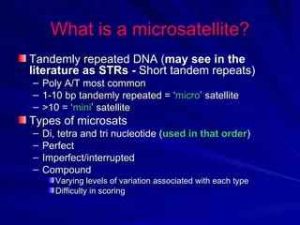What are Microsatellites
Microsatellites are small spacecraft with a mass typically ranging from 10 kg to 100 kg. They are designed to perform a variety of space missions, from Earth observation and scientific research to communication and technology demonstration. Microsatellites offer a more cost-effective alternative to traditional larger satellites, enabling broader access to space for a wide range of industries.

Key Features of Microsatellites
Small Size and Lightweight Design
The defining characteristic of a microsatellite is its small size and lightweight design. Unlike larger satellites, which can weigh hundreds or even thousands of kilograms, microsatellites leverage advanced miniaturization techniques to reduce their mass without compromising performance. This makes them ideal for applications where smaller payloads are required, or when cost reduction is a priority.
High Efficiency and Performance
Despite their smaller size, microsatellites are equipped with advanced technology that allows them to perform highly specialized tasks. These small spacecraft are capable of collecting high-resolution data, providing critical communications, and supporting scientific missions. The key is the optimization of available space and power, enabling these small satellites to offer significant value for various missions.
Low-Cost Launch Options
Microsatellites have significantly reduced the cost barrier to space. By offering a more affordable alternative to traditional satellites, these small spacecraft have opened the door for many new entrants into the space industry, including universities, research institutions, and startups. Additionally, many microsatellites can be launched as secondary payloads on larger rockets, further reducing costs and improving access to space.
Applications of Microsatellites
Earth Observation and Environmental Monitoring
Microsatellites are increasingly being used for Earth observation applications. These small satellites can capture high-resolution images of the Earth’s surface, monitor environmental changes, track weather patterns, and even assist in disaster management. Their ability to collect real-time data is invaluable for tracking deforestation, urbanization, and the effects of climate change.
Communication and Connectivity
Another significant application of microsatellites is in the field of communication. With the rise of satellite constellations, microsatellites are providing critical connectivity services, especially in remote and underserved regions. These small satellites offer a cost-effective way to establish global communication networks, providing high-speed internet access to rural or isolated communities.
Scientific Research and Technology Demonstration
Microsatellites are often used in scientific missions to conduct research in fields like astrophysics, climate science, and biology. Due to their smaller size and lower cost, they allow for more frequent launches and enable experiments that would be too expensive or complex with larger spacecraft. Additionally, microsatellites are valuable platforms for testing new space technologies before they are deployed on larger missions.
Advantages of Microsatellites
Cost Efficiency
The primary advantage of microsatellites is their cost efficiency. They provide a more affordable solution for missions that require less complex payloads, making space more accessible to a wider range of organizations and businesses. Lower launch costs also allow for frequent mission deployments, creating opportunities for ongoing research and innovation.
Faster Deployment
Due to their smaller size and modular design, microsatellites can be developed and launched much faster than traditional satellites. This rapid deployment capability allows businesses and governments to respond to changing needs and opportunities in space technology, particularly in industries that require real-time data or near-instantaneous communication.
Flexibility and Customization
Microsatellites can be customized for a wide range of missions. Whether it’s monitoring environmental changes, providing connectivity for remote areas, or conducting scientific research, microsatellites offer flexibility in terms of payloads and mission objectives. Their modular nature allows for the integration of different technologies, making them ideal for a variety of applications.
Challenges in Using Microsatellites
Limited Payload Capacity
While microsatellites are incredibly versatile, their small size comes with limitations in terms of payload capacity. This restricts the types of instruments and technologies that can be incorporated into the satellite. For some missions that require more powerful instruments, larger satellites may still be necessary.
Limited Operational Life
Due to the limited power and size of microsatellites, their operational life is often shorter than that of larger spacecraft. Many microsatellites are designed for specific, short-term missions, meaning they may only operate for a few years before being decommissioned or replaced.
Space Debris and Collision Risk
As the number of microsatellites in orbit grows, so does the risk of space debris. The potential for collisions between small satellites, as well as with other space objects, presents a challenge for the sustainability of microsatellite constellations. Effective management strategies, such as active deorbiting systems, are crucial to minimize this risk.
The Future of Microsatellites
The future of microsatellites is bright, with increasing demand across various sectors. As technology continues to improve, the capabilities of microsatellites will expand, enabling more complex missions in space. Innovations in propulsion, power systems, and miniaturized payloads will increase the range of tasks microsatellites can handle.
Microsatellites are expected to play a key role in the development of large satellite constellations, providing a backbone for global communication networks and data collection systems. With their cost-effectiveness, speed of deployment, and versatility, microsatellites will continue to shape the future of space exploration and technology.
By offering access to space at a lower cost and facilitating new research opportunities, microsatellites will be instrumental in advancing our understanding of space and improving life on Earth.
